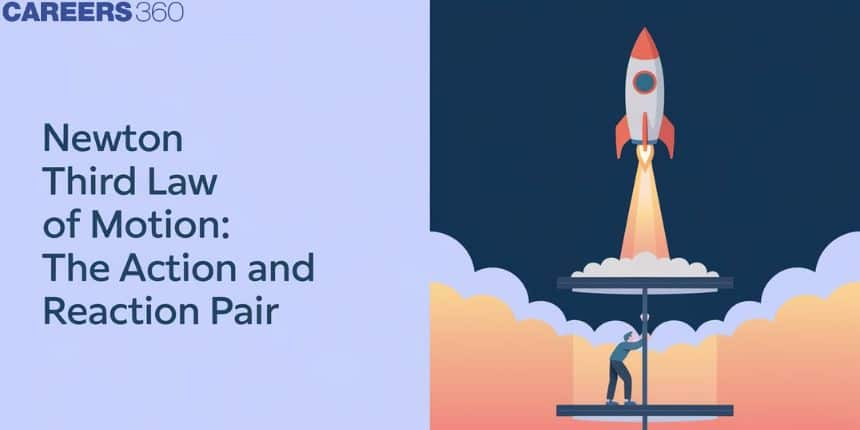Newton Third Law of Motion The Action and Reaction Pair - Detailed Guide
Newton's Third Law of Motion states that any given force in one direction will always return in equal measure and opposite in direction to the body that applied it. This principle explains that force always works in pairs-in other words, every interaction between two objects always generates two forces that are equal in size but reverse in direction. These action and reaction forces coexist at the same point in time but are different bodies and therefore, cause equilibrium for an entire system.

Newton’s Third Law of Motion
Newton’s third law of motion is defined as the law of action and reaction. The law of action and reaction states that, for every action, there will be an equal and opposite reaction.
In this universe, when any force is applied to an object, that object will exert an equal amount of force but in the opposite direction to that applied force. A force is nothing but an action of pull or push that acts on an object by which it causes an interaction with another object.
The force between objects can be classified as
- Contact force
- Action at a distance
Contact force happens when the two objects are having physical contact with each other. Examples of contact force are frictional force, air resistance, and tensional force.
Action at a distance force happens when the two objects do not have any physical contact with each other. Examples of action at a distance force are gravitational force, electrical force and magnetic force. When we jump on the ground even though our foot doesn’t touch the ground some gravitational force will appear on our feet by moving back to the ground.
Also, read
- NCERT Notes For All Subjects
- NCERT Solutions for All Subjects
- NCERT Exemplar Solutions for All Subjects
Action And Reaction Pair in Newton’s 3rd Law
According to Newton’s third law, there will be an equal and opposite reaction for any action. Consider that object A and object B interact with each other, by Newton’s third law these objects will exert force on one another.
This can be given with a mathematical expression as
Fa= - Fb
Here when object A exerts a force on another object B, then an equal amount of force will be exerted back on object A but in the opposite direction which is denoted with a minus (-) symbol.
Now we can illustrate the Action and reaction pair with an example.
- When we sit on a chair, we exert a downward force on the chair which is action. Similarly, the chair will exert an upward force on you which is a reaction. These two forces are action and reaction pairs. So a pair of forces acts on objects which are interacting with each other.
- When a fish swims in water it exerts a downward force on the water – action. Since the force occurs in mutual interaction the water will exert an equal amount of force on the fish but in the opposite direction i.e. upwards – reaction.
- Consider a bird flying in the sky. The bird swings the wing in a downward direction to push the air downwards - action. Since the force occurs in mutual interaction the air will exert an equal amount of force on the wing but in the opposite direction i.e. upwards- reaction.
Related Topics |
Examples of Newton's Third Law of Motion
The third law of motion examples in daily life is given below.
- Gun mechanism
- Bouncing a ball
- Walking on ground
- Using of hammer for hammering
- Balloon air is evacuating
- Rowing a boat
- Moving of car
- Sports like hockey
- Using an elastic band
- Slingshot
Frequently Asked Questions (FAQs)
Movement of air
Mutual interaction force
The bird swings the wing in downward direction to push the air downwards - action. Since the force occurs in mutual interaction the air will exert an equal amount of force on the wing but in opposite direction i.e upwards - reaction.
Newton’s third law of motion states that, For every action there will be an equal and opposite reaction.
When we sit on a chair, you will exert a downward force on the chair which is action. Similarly the chair will exert an upward force on you which is a reaction. These two forces are action and reaction pairs. So a pair of forces acts on objects which are interacting with each other.
Force between objects can be classified as
Contact force
Action at a distance
Contact force happens when the two objects are having physical contact with each other. Examples of contact force are frictional force, air resistance, and tensional force.
Action at a distance force happens when the two objects do not have any physical contact with each other. Examples of action at a distance force are gravitational force, electrical force and magnetic force.
Law of action and reaction.
Newton’s third law there will be an equal and opposite reaction for any action. Consider an object A and object B interact with each other, by Newton’s third law these objects will exert force on one another.